It seems like the science behind cannabis growing gets more advanced each year. As marijuana gets legalized in more places across the world, there also comes a need for knowledge about it.
Countless newbie growers want to know how to grow cannabis seeds and the right seeds to do it with. In today’s guide, we want to spotlight how to grow autoflower cannabis seeds.
What is an auto-flower seed in the first place? What are the benefits of auto-flower marijuana seeds over regular or feminized seeds? Maybe you want to cut straight to how to grow them. Whatever your reason for wanting to learn more, you’ve come to the right guide.
Whether you have an indoor or outdoor grow setup, there’s much to love about autoflower strains. Consider this the ultimate guide to everything you might want to know.
Just like cannabis ruderalis, auto-flowers are gaining much traction in the industry. Nowadays, what used to be hard to fathom as a possible strain is what growers yearn to cultivate themselves. With that in mind, let’s dive in to understand this phenomenon type of strain better.
The term auto-flower was first coined in the early 1920s. A Russian botanist happened to cross two rare marijuana strains. What was bred became the first autoflower cannabis strain!
D.E. Janischewsky, the Russian botanist, wanted a somewhat independent marijuana strain. At the time, marijuana wasn’t nearly as easy to grow as it was a century later. So for many years, he sought a marijuana strain that didn’t depend on conventional weather patterns to grow.
To finally find that kind of strain, Janischewsky crossed ruderalis strains with either Sativa or Indica. The result was a marijuana plant that grows and flowers without your necessary attention. In addition, it was a much lower maintenance strain, requiring little interference to flower beautifully.
, Unlike regular plants, autoflower plants don’t need specific signals to continue growing. Instead, regular plants must wait for specific signals from the sun. The signal is anything that tells the plants that they’re approaching a cold or winter season.
Regular plants can only grow under the right light conditions, typically from the sun. Therefore, they need a specific programmed light pattern to fully mature.
Meanwhile, autoflower plants don’t need any signals to grow leaves, flowers, branches, buds, or even to shed. So whether cold or hot, low-light or not, auto-flower strains can keep growing.
As a result, auto-flower suggests that the flowering mode is automatic. With zero signal from the sun, these strains start to flower within a few weeks. This weed strain doesn’t wait to be induced or directed by a particular light cycle.
Also, autoflower marijuana strains produce buds when ready. Conversely, regular strains need an inducement. This is typically done through a significant change in the lighting pattern.
Critics of autoflower marijuana strains argue that regular or photoperiod strains have a higher potency and yield.
However, when auto-flower plants are grown with expert tips also show highly excellent results. In potency and yield quantity, auto-flower strains offer more than enough.
Our autoflower cannabis seeds are engineered to provide a maximum yield as fast as possible. Especially when you break down how quickly auto-flowers grow in comparison, choosing this type of strain becomes easy.
Plus, cannabis genetic breeding techniques advance further every day. So now, it’s plausible to have higher yields than certain photoperiod strains.
Many reports of growers having auto-flower marijuana strains that produce high THC levels. Something no one would think possible even just a few years ago can happen more accessible than ever in today’s cannabis climate.
To be more specific, autoflowering cannabis strains can take up to 14 weeks. Most, however, often take less than 12 weeks to grow. Typically, they can be ready for harvest in 60 to 90 days. However, in rare cases, you could grow an auto-flower in as little as 6 or 7 weeks.
The life cycle of an auto-flowering strain is short and rewarding.
For most, once the seeds germinate, it takes 1 to 2 weeks for them to adjust to their seedling stage.
Then, there’s the third week’s explosion.
After that, they take only 1 to 4 weeks before they enter their flowering stage. This makes them faster than their photoperiod counterparts. To give you an idea, regular cannabis strains can take 3 to 8 months. So that’s anywhere from 10 to 32 weeks.
On average, most auto-flowers take between 6 to 10 weeks to fully mature. Because of this significantly shorter maturity time, many growers prefer autoflower strains to regular photoperiods.
Whether you want to know how to grow auto-flowering cannabis seeds outdoors or indoors, we want to help. So we’ll go over what you’ll need before you start.
The first thing you need to ensure you grow beautiful auto-flower cannabis strains is proper support. While we’ve bragged about how much easier auto-flowers are to grow, they still require tender love and care.
Compared to regular photoperiod marijuana strains, auto-flower strains can be more feeble. If it won in every department, regular strains would be a thing of the past. However, even though they may be more feeble, it doesn’t mean they’re not suitable for cultivation.
As far as proper support goes, start with good artificial light. This is, of course, if you’re growing indoors.
You may wonder why you need light if it doesn’t need a light pattern to grow. On the contrary, all plants need some light. The only contrast is that this type of marijuana doesn’t follow a specific lighting pattern.
They can start flowering, branching, and even introducing buds in different lighting patterns. It’s not that auto-flowers need no light at all. Instead, they are more versatile in what light they will accept.
Ensuring autoflower seeds germinated is the key to any other growth stage. You might follow the conventional, traditional way. Grow the seeds directly into the soil and transfer them to an indoor structure or greenhouse upon germination.
Alternatively, you can use a medium such as a pot or paper towel for germination. Whatever medium you use, ensure the soil has proper nutrients for quicker germination and a more robust, healthier plant. This is especially important during its earlier stages.
Still not sure how to even get started? Don’t worry; we’ve got you covered. Here’s an easy-to-follow, stage-to-stage general guide.
Keep in mind every strain is different. You may need to adjust times appropriately if you have an auto-flower that takes a bit longer. Pay attention to which strain you choose so you can adjust each growth stage accordingly.
For this guide, we’ll use our autoflower cannabis seeds with the shortest grow times, 6 to 8 weeks indoors.
Germination will occur within the first three days. For some strains, they can germinate in as quickly as 24 hours. You’ll need to use an appropriate soil mix for this step.
To give you a better idea, autoflowers prefer light, airy soil. As a result, they don’t need as many nutrients as their photoperiod variants.
During this phase, seeds will activate and send a root down to the soil and a shoot just above the surface.
When it does germinate, it’s time to plant your seeds further! Start by poking holes about 10 to 15mm wide and deep. This will be your seed’s final potting place.
(Transplanting plants too much can cause them to go into shock, so it’s simpler to avoid altogether. Also, Autoflowers often grow so fast that the recovery time for transplanting can negatively impact them too much.)
Place a seed in each hole. Cover them lightly with soil. And expect them to emerge within the following days.
And make sure your potting soil has the following:
Alternatively, you can purchase an autoflower soil mix with everything for you. While some growers prefer to make the soil mix themselves, it all comes down to preference.
Your little seedling is well on its way now! At this point in the growth stages, your seedling should create energy from its light source. It’s now emerged, and the process of photosynthesis is underway.
We recommend an LED light for this endeavor. But, of course, how much light you need will depend on your specific autoflower cannabis strain. Likewise, it’ll depend on how many plants you’re trying to grow.
Typically, a 250W LED light will provide enough power for indoor growth. This light level is sufficient for growing one large plant per square meter.
The maximum is four plants under this light level once, as long as you use low-stress training.
There are many reasons growers generally prefer LED lights. LEDs:
The right grow LED light will have a timer and different light settings. You’ll change the light to the blue setting during this next phase. Likewise, you can utilize the timer to meet your ideal light schedule.
In this late seedling phase, it’s time to apply the right nutritional formula for the job. Just like that soil mix we mentioned, some formulas are designed for this step.
Get your plants a nutritional formula that fits the seedling and vegetative phases. Each formula should specify what stage it’s meant for.
Since you are dealing with autoflowers, they don’t need as much nutrition. So, twice your plants a quarter to half of the usual formula dose twice a week.
Vegetation is well underway at this point. This is often around the 3-week mark but varies for each strain. Stage 3 consists of maintaining ideal conditions and low-stress training. As a result, new fan leaves will form, improving their photosynthesis production.
Low-stress training is ideal for indoor growing projects.
Take some garden wire and tie a piece halfway up your plant’s main stem.
Gently bend the stem parallel to the ground.
Attach the other end of the wire to the pot’s rim to secure it in position. This strategy helps to expose more bud sites to light by flattening the canopy.
It’s time to change up some of your variables:
Water only once the soil’s top layer dries out. So your plant has the potential to drink about 0.5 liters of water per day now.
Once your plant reaches about half a foot in height or 15cm, you can reposition your light. Adjust the light, so it hangs around 1 meter from the tip of the canopy. This limits the risk of light stress and allows your plant to get more optimal photosynthesis.
This is around week 4 for most autoflower strains. Your plant is close to its flowering stage! At this point, you should be giving your plant 0.5 liters every day.
For the late vegetative phase, you’ll make some minor adjustments:
This is also where you must wrap up your low-stress training. Use more garden ties to pin down further growth to ensure your buds are at the same level.
Flowering has finally begun! Tiny sacs with hairs atop should emerge at the nodes at this stage. Gradually, these will turn into resinous, sticky buds. This week is all about continuing to make those minor adjustments.
Your plant should be about 30 cm (1 ft) tall here. Make sure these factors are in play:
Red light during this stage encourages the budding process. Plants will expand and stretch during this phase.
It’s also time to change your plant’s nutrition formula. It’ll need more magnesium, calcium, phosphorus, and potassium but less nitrogen. Fortunately, plenty of formulas can make this adjustment for you.
During this phase, things start to get a little stinky. It’s that good, dank kind of stinky, though, so no worries! The flowers have started increasing. They’re increasing and developing a spread of evenly-sized buds FAST.
This is right around week 6 for most autoflower strains. Make sure you adjust the humidity here to reduce the risk of mold. Aim for these variables:
Keep in mind that this is the most extensive monitoring phase. Pay careful attention to the water and feeding schedule you’ve established. Next, keep an eye out for unwelcome intruders, like spider mites and mold. Finally, look at your plant’s leaves to ensure there aren’t signs of nutrient deficiency.
The next step is to flush the plant’s soil with water. This stage, which usually happens around week 8 or 9, clears excess chemicals from the plant. The plant cannot eat any other chemicals.
You’ll do this flushing process multiple times over the next week or two. Let your soil dry between each flush.
While we don’t recommend taking cuttings from the plant, this is a great time to trim it up. Remove any small fan leaves from the bottom nodes. This limits the risk of developing mold and helps the plant absorb more light.
Finally, we’ve made it to the finish line. It’s time to harvest the fruits of your labor! You’ll know you’ve reached this step when the trichomes on your buds are almost white. The pistils should be brownish-red.
Typically, this stage happens between 10 and 12 weeks. Adjust accordingly if you’re using an autoflower strain that takes less time.
The results can vary wildly depending on the strain you grew and the quality of that strain’s seeds. Each plant also requires time to fully mature, so don’t worry if your plant seems slower to grow.
You’ll notice that some buds have positioned themselves closer to the light. These buds will likely finish ripening first. It’s why the harvest process doesn’t happen all at once.
Please take your time and harvest buds as they’ve entirely matured.
This last step can be an afterthought for many. After harvesting, it’s time to dry, cure, and store your bud. Many of the same techniques for this stage also work with regular photoperiod plants.
The most popular method is to hang your buds upside down for a few days. This dries them out. Keep a watch out for mold during this step.
Once the buds are dry, store them in airtight containers. Make sure there’s a bit of space in each jar.
Over the next week or two, open the jars once a day for just a few minutes. You can then move to open them every 2 to 3 days. All you’re doing is essentially adjusting the humidity in the jars.
Curing can take a minimum of two weeks, but it can take up to two months. It all depends on how patient you are!
To grow your autoflower outdoors, you need to keep the pot containing the autoflower seedling in an area that receives a minimum of 8 hours of sunlight, a place with temperature ranging between 18 to 25°C (65 to 77°F), and 60% Relative Humidity. Next, provide the plants with sufficient water, potassium, and nitrogen nutrients during the vegetative phase. Lastly, provide flowering nutrients during the flowering phase.
Autoflowers, unlike photoperiod cannabis strains, don't follow a specific lighting schedule, so there is no need to keep switching lights on and off every 12 hours. Instead, you can grow autoflower with led by leaving the lights on for anywhere between 18 and 24 hours until you harvest your yields.
Yes, you can grow autoflower strains outdoors. What's more important is that the plants need to get sufficient nutrients, water, and at least 8 hours of sunlight. Additionally, ensure that growth inhibitors such as pests like caterpillars, animals such as deer, and curious people such as kids shouldn't come near your outdoor-grown autos.
To grow an autoflower in DWC, start germinating the seeds using your preferred method. After the emergence of the seedling, place it in the DWC's system and nestle it in clay pebbles for support. Maintain a pH of 5.8 and ensure 18 hours of LED lighting until your autoflower weed is ready for harvest.
The best pot size to grow autoflowers is where the strain can utilize most nutrients until harvest. For tall autoflowers, a pot between 10 and 15 liters should be perfect. For smaller autoflowers, going for a pot between 1.7 and 2.3 gallons (6.5 to 8.5 liters) is handy.
Yes, you can grow autoflowers without nutrients, mainly when you use some fertile soil. However, note that the plants may not produce optimal yields, and the quality of the weed will certainly be poor. Therefore, ensure that the plants receive sufficient yields for the best quality weed and bumper yields.
You can grow autoflowers in hydroponics, One of the crucial advantages of autoflower weed hydropic growth is accelerated, and the flowers are terpene-rich with killer frost. What's more important to note is that pH plays a critical role in hydroponic growth and should be adequately mastered.
Since autoflowers have hardy genetics, you can grow them in winter. First, however, it's essential to ensure that you grow them indoors with sufficient lighting and temperature regulation. The best temperature for autoflowers is between 20 to 25°C (68 to 77°F), and humidity is between 50 and 70%. These factors will help autoflowers to grow in winter without struggling much.
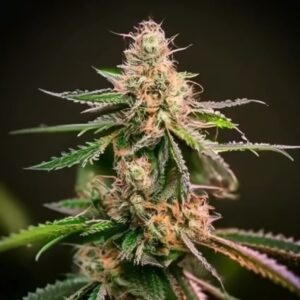


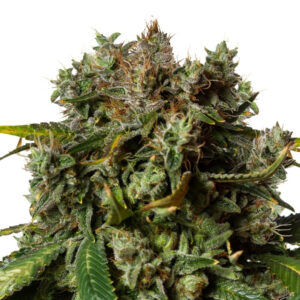

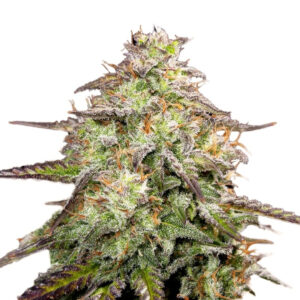
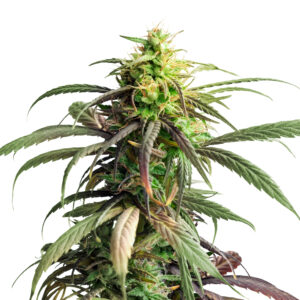






Related Posts

We want to devolve into some fun facts about autoflowers that you may not be aware of yet. As they continue to grow in popularity, we hope this will help you uncover the desire to grow them yourself.
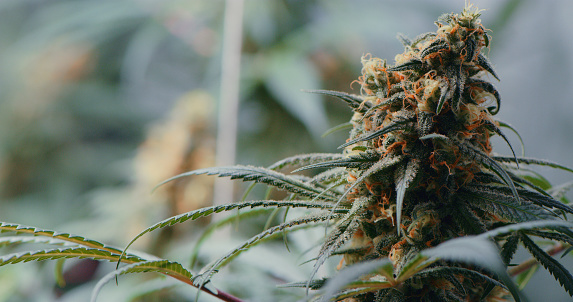
Discover how to get bigger buds on autoflowers with proven growing tips—from choosing the right strain to improving light, nutrients, and soil conditions. Unlock the full potential of your autoflower cannabis plants for higher yields.
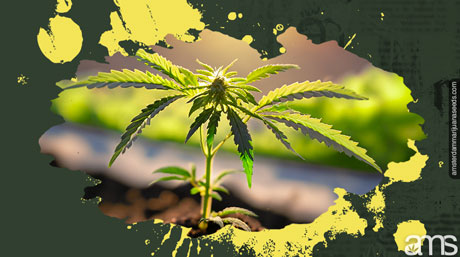
The autoflower ganja seeds from AMS offer a symbol of effortless cultivation. They denote self-reliance, seamlessly transitioning your ganja plant from germination to vegetative phase and onto flowering, without the grower needing to meddle with complicated light cycles.